Hi to all, I'm Jak. I didn't find an appropriate section where I could introduce myself, so I'm doing it here ahaha
I'm not a mastering engineer, alas! I've just followed some courses for a fee, but I have experimented for 1 year and 2 months and now I'm here, constrained to ask help, because I can't reach my goals. I'm honest, I've tried everything.
I've produce electronic music for 4 years, in my spare time. I've produced a Progressive House track, serene and melodic, based on chords.. How can I explain myself? Uhm.. Like "The Veldt" of Deadmau5. Yeah, it's a good example.
Back to the topic, I find difficulties during sample compression. I'm using iZotope Ozone 5 to EQ & Dynamics.
I've read that the use of a single band compressor is recommended during mixdown, so I did it.
After doing this for each sample of a Bus Channel (examples: Kick, Snare, Hi-hat s -> "DRUMS"), I EQ and compress it.
I use an audio editor (like Audacity, ecc) to do a countercheck and look at the sample peaks after the mix.
Look to the following screenshots, it's the better way to explain myself:
W/out EQ & Compression
1
2
W/in EQ & Compression
1
2
It can't be possible ahaha Why after EQ'ing and Compressing I have an undulation of peaks? In theory, should be reduced ahaha
And I don't tell you about kick + snare & clap.. (snare & clap is a single sample).
W/out EQ & Compression
1
2
W/in EQ & Compression
1
2
W/in EQ & Compression on BUS CHANNEL
Here's the samples: Cakewalk - SONAR X3 - What's New
How do you EQ & Compress all? The comparison might be useful!
Thank you very much for your patience :redface:
Jak
Tags
Comments
Ok guys, I'm back! Yesterday I had no time and I was in a hurry,
Ok guys, I'm back! Yesterday I had no time and I was in a hurry, to top it all I'm not an expert in English language and I wouldn't write wrong things that make you weep blood out of your eyes ahaha
pcrecord, post: 410346 wrote: Actually, you can create peaks with a compressor if you put a slow attack and a long release...
Further more, if you enhance bass with an EQ, it may add to your peaks..
"Attack" and "Release". These are the focal points.
For example, I've set up the compressor's ATK at 15ms to the kick that I have shared to you in the first message..
They're the firsts 15ms before start the body of the kick, the part of the bass..
For the compressor's REL parameter, I've set up the whole duration of sample, that is 192ms.
Because it remains active all the sample time, that is less then the time of 2 hits, so it doesn't compress the second hit of the kick.
Is it wrong to do? I'm aware it's an escamotage, but maybe it can be valid :)
pcrecord, post: 410346 wrote: On a personal taste ; please don't kill the dynamics of your music.. keep it alive..
We're on the same side, I always try to compress the strictly essential.. Just enough to get this kind of shape:
bouldersound, post: 410347 wrote: But what matters is how it sounds. Who cares how it looks?
Try to reach perfection, without never stopping :D
Philosophy aside, you can see a very good mastering as well as listen to it. At least I think ahaha
But, if you look at this:
And then you look at these:
1) Basto - I Rave You (Original Mix)
2) Excision, Space Laces - Destroid 7 Bounce
3) Skrillex - First Of The Year (Equinox)
You stick up your nose ^_^"
I think it's natural to reach those levels when mastering sounds great.
DonnyThompson, post: 410351 wrote: Are we to understand that you added a limiter to each individual track and then added another limiter to your 2-bus output as well?I'm asking...
First of all, I've EQ'ed and Compressed the kick sample and the snare sample, after that I've routed them to a Bus channel and I've done the same thing on it.
It's almost a rule.. It's a proof the existence of bus compressor, like the SSL G-Master Bus Compressor, the UAD Precision Bus Compressor and the UAD Neve 33609 Bus Compressor.
Ok, rules are made to be broken (example: Alan Parsons famously put the whole mix of "Dark Side Of The Moon" through a bus compressor, but not the drums), but this is another story :)
Jak, post: 410363 wrote: Philosophy aside, you can see a very go
Jak, post: 410363 wrote: Philosophy aside, you can see a very good mastering as well as listen to it. At least I think ahaha
Most bad audio looks almost exactly like good audio. Other than gross errors, like severe lack of dynamics, it's a waste of effort to get as wrapped up as you are in the displays. Oh, well, it's not my problem.
Respectfully, I think you are focusing too much on the appearanc
Respectfully, I think you are focusing too much on the appearance - instead of the sound.
You mentioned that you like to compress things so that they look like a particular wave form... instead of that, how about basing your settings on how it sounds ?
If you are relying on the appearance of a waveform as the touchstone to a perfect "whatever" -be it kick, snare, vocal, etc., you are neglecting how they actually sound, and that will change greatly depending on many things... one of which is the sound of the mix as a whole. It's one of the reasons that I rarely EQ or compress any instrument in solo mode. When you work that way, you can get what you feel is the "perfect sounding snare"... then you drop it into the mix and it doesn't work at all when put in context of the song as a whole. And, what worked on one particular mix might not work for another, yet if you are relying on the physical appearance of a waveform, you are locking yourself into a pre conceived notion based on past appearances.
It's a proof the existence of bus compressor, like the SSL G-Master Bus Compressor, the [="http://www.uaudio.com/uad-plug-ins.html"]UAD[/]="http://www.uaudio.c…"]UAD[/] Precision Bus Compressor and the UAD [[url=http://="http://www.rupertne…"]Neve[/]="http://www.rupertne…"]Neve[/] 33609 Bus Compressor.
Ok, rules are made to be broken (example: Alan Parsons famously put the whole mix of "Dark Side Of The Moon" through a bus compressor, but not the drums), but this is another story
The rest of that story was that he didn't really want to use any compression at all. Engineer Chris Thomas talked him into compressing just the instruments and vocals other than the drums. On this, the drums, Parsons wouldn't bend.
And...You're not using a 33609 Neve. You're using an emulation. The same goes for the SSL G series processing and the Uni Audio stuff as well.
So, yeah, Parsons strapped a compressor across the 2-Bus. It was common practice then, and still is today, for guys who use real consoles.
But he was using the real thing, not emulations. He had a real console (probably a Trident or EMI or other British-built desk) with very nice preamps and EQ, and when he pushed the mix through a compressor, it was a real one... something like a Fairchild, perhaps, because they were very popular gain reduction models in British studios at that time. These processors were real.... they weren't arbitrary 1's and 0's converted, they had Pots and Switches and Relays and Circuits and Wiring... things that got hot.
And he was tracking to TAPE. All these things make quite a bit of difference in the sound of a recording.
Every engineer has their own individual way of doing things. If your mixes sound great, then far be it for me to suggest that you should change your methods... but in the end, no one cares what a song looks like.
Can you imagine that in your comments there's nothing concrete?
Can you imagine that in your comments there's nothing concrete?
Your words mean all or nothing and you're not helping me.
In the courses that I have frequented, teachers have told me that the spectrum of the track will look like a "laser beam" (metaphor), when the mastering sounds great.
You're telling me that I don't have to act with the eyes, but with the ears, as if I din't know it already.
Let's just stop and reflect.
Mastering, in the end, is the activitity where you try to reach as close as possible the 0 dB of an audio product's volume.
Look at the spectrum of the track that I said that's not good: it reaches -3 dB in the max peak and -7 dB in average, while the other tracks that I've posted reach the maximum gain that can be achieved today, in 2014, and they sound amazing .
So, it's clear that, good as it may sound, the track with -7 dB of average peak is not at the maximum level of mastering I'm just trying to get closer.
Are you agree?
Welcome to the loudness war: it refers to the tendency of the music industry to record, produce and distribute music, year after year, with progressively higher levels of volume, to create a sound that exceeds in volume competitors and records of the previous year.
Established, I'm not crazy :)
TheJackAttack, post: 410366 wrote: Sorry, it's an aural thing not an ocular thing.
I know. To set the ATK of the compressor, I haven't looked only at the spectrum of the sample from that VSTi, I have also heard, of course, and 15ms is the point where the kick's low-freq begins, exactly the part I have to compress.
Now, my question is: how do I know what is the release time to be set?
As a rule, the release is whole duration of the kick, I think by logic way, because it's his "tail" that I would like to compress ("tail" = body, composed of the lower-frequency part).
Am I wrong?
Can you correct me with the correct way that should be applied?
bouldersound, post: 410364 wrote: Most bad audio looks almost exactly like good audio.
Sure, it's easy to put a limiter or a maximizer in the master channel and raise up to get a spectrum such as those ("laser beam"), but you have everything in distortion, obviously.
The tracks, that I've suggested, aren't distorted in sound:
1) Basto - I Rave You: [="http://www.youtube.com/watch?v=PMco4nq2_kg"]Basto - I Rave You (Give It To Me) [Official Video HD] - YouTube[/]="http://www.youtube…"]Basto - I Rave You (Give It To Me) [Official Video HD] - YouTube[/]
2) Excision - Bounce: [[url=http://="http://www.youtube…"]Excision & Space Laces - Bounce (Destroid) - YouTube[/]="http://www.youtube…"]Excision & Space Laces - Bounce (Destroid) - YouTube[/]
3) Skrillex - Equinox: [[url=http://[/URL]="http://www.youtube…"]First Of The Year (Equinox) - Skrillex [OFFICIAL] - YouTube[/]="http://www.youtube…"]First Of The Year (Equinox) - Skrillex [OFFICIAL] - YouTube[/]
Things should be done thinking.
I assure you that I'm not the first fool who asks you for help: before signing here, I've consulted all the existing material on the web (or almost) and I might almost say that I haven't missed a single article, from blogs to magazines, from tutorials to users' manuals, etc.
For this reason, I ask you to be more available to me.
When a commercial mastering engineer makes things "as close to 0
When a commercial mastering engineer makes things "as close to 0db" as possible they are using analog gear and not compressing inside the computer. Additionally, in the learning stages there is a great deal more mistakes than successes. You learn by doing and understanding what a compressor is doing and what each individual setting is altering. You cannot alter one without affecting the others. If your English is good enough there is a sticky here that breaks down the different functions in regional US English and then it is up to you to experiment with honest ears. You cannot fight the loudness war and have the music sound good without a lot of expensive equipment.
As I state, this uses idiomatic US English so I am not sure if t
As I state, this uses idiomatic US English so I am not sure if this will help or not. Once you understand, then experiment.
TheRealShotgun, post: 176108 wrote: "Spinning wax at parties" DJ or "You're listneing to KRAK, I'm Bones and THIS is the new one from Mother's Finest!" DJ? They each have their reasons to die, so I'm glad to see you're clawing your way up from the depths of depravity. Welcome to the light.Yeah, I can tell. But no biggie, compression has brought many a big, strong man to their knees. What you've got here is the classic mistake of somebody who's read too much about compressors from people who don't use them often enough theirselves. For example, 99% of the people on this forum. Sorry to be blunt about that, but the "some compression to excite my dynamics" discussion really gave me a sad outlook on the local intelligencia.
The assumption I read from your question is that there are certain "settings" one can dial up on a compressor and that these "settings" (defined, I assume, as a set of positions for each of the common compressor controls) match up with either certain situations or certain other combinations of gear.
For example, I would imagine you expect it to be true that if you use an SM57 on a guitar amp playing heavy metal that you should use compressor setting group 621951-b which consists of attack = 8ms, release = 25ms, ratio = 4:1, threshold = -15dB. Which is absolutely untrue. Plenty of people will be here shortly to reiterate this, but compressor settings are variable per each use regardless of the source or, other gear involved with, or destination of the signal. However, all is not lost, read on...
What you need to effectively use compression are two things, one of which I can give you here. The other one you're going to have to get on your own.
Shotgun's Compressor Tools 1 of 2
What you have to do is understand what compressors do, and what each of the controls do IN GENERAL. Then you apply that knowlege to what you want out of using the compressor and what your ears hear AT THE TIME OF USE so that you can adjust as necessary. So, read below for an overview of the box as a whole and each knob you're likely to find on it.Compression
From the name, one can surmise that a compressor is going to squish, squash, mash or pulverize something. Given that we plug audio signals into it, we can further surmise that what is getting squished, squashed, mashed or pulverized is, indeed, our audio signal. And one would be completely correct in assuming that. But what does that really mean?Well, consider an audio signal. Let's say it's a recording of my mom yelling at me about leaving my laundry piled haphazardly in the hallway. First, mom starts out trying to reason with me, gently, "Shotgun, you know, it's just not condusive to laundry efficiency leaving that stuff piled haphazardly like that..." her voice is calm, even and even somewhat soft. As I stare at her blankly, not understanding the finer points of sorting one's laundry and transporting it to the appropriate room in the house her voice becomes stronger and louder. "SHOTGUN! I'M GOING TO BEAT THE LIVING SHIT OUT OF YOU WITH A TIRE IRON IF YOU DON'T PICK THIS SHIT UP IMMEDIATELY AND PUT IT WHERE IT BELONGS SO HELP ME GOD!" Now she's yelling, screaming, in fact. Her face is red and frankly, I've just soiled myself which makes the entire laundry issue even more complicated.
Now, let's assume we're going to lay this recording of mom over some Nine Inch Nails-style door slamming, pipe clanging, fuzz guitar backing tracks. It's going to be an artistic tour-de-force. However, when mom starts out, her voice was hitting only about 65-70dB--normal conversational speech. By the time she's done it's more like 105dB worth of banshee howling. Unfortunately, our backing tracks are a pretty even volume the whole way through. So, at the beginning of the track mom will be virtually inaduible whereas at the end she'll be drowning out my samples of whacking a stapler on a desk. How do we deal with that?
WE USE A COMPRESSOR!
You see, what a compressor compresses is volume. That is, technically, it compresses the amplitude of the signal, or its "gain". So for every decibel that goes into the compressor, only a fraction of it will come out. That means that (depending on our settings, see below) if mom's voice uncompressed winds up at 105dB then we can set our compressor so that it only gets as high as 52dB if we want. How does that help you ask? Won't it still be too low to hear over the backing music? Yes it will, but read on and we'll cover that in the controls discussion.
Threshold
The threshold control on a compressor sets a level below which the compressor will do no work. The control is graduated in dB (in this case dBV of signal level) and allows you to set an "on/off" point so that you can compress the LOUD parts of a signal, and leave the soft parts alone. At times you may want to set this control low enough so that you're affecting the entire signal, at times you may not. In the case of mom's rant-on-tape, what we may want to do is set the compressor so that it doesn't touch the signal until her voice reaches something like 85dB or so***, say, about halfway up the scale from softest to loudest. So, we set the threshold so that we only see activity on our "gain reduction" meter when the track gets to a certain point.To USE the threshold control effectively, you generally need to use your ears. Have some idea, before you start, of what you hope to accomplish by using the compressor and set the threshold to capture the part of a signal you wish to do whatever that is to. In our example I want to lower the louder parts of my mom's tirade so I set the threshold to activate the compression at some arbitrary point in the track. I could have done it several other ways and the only way to learn which is best is to experiment and listen.
Ratio
This is the control that tells us how much signal comes out of the box relative to what's coming in. It is graduated in terms of a ratio (hence the name) of output to input. So, let's say we set the control to point at "2:1". That means that for every 2dB of incoming signal, we're only going to get 1dB of outgoing signal. Which means that at its very loudest, mom's voice isn't going to be nearly as loud as it was originally. Keep in mind that this ratio only applies to signals that meet or exceed the threshold setting. Any signal that is below the threshold just passes through as though the compressor weren't there (kinda).To use the ratio control effectively you, again, need some idea of what you want out of your compressor overall. In our case I just need mom's voice to be more easily mixed in with the backing tracks so I just want it to be kind of even. However, I still want it to start softer and get louder, just maybe not AS soft at the beginning and not AS loud at the end. That is, still changing, just not as much.
Attack
The attack control tells us that, once a signal meets or exceeds the threshold, how quickly does the compressor put the smack down on said signal? The control is usually graduated in intervals of time, usually marked in milliseconds. So, let's say that I set my attack control to say 5ms. That means that when the signal passing through reaches the threshold I've set, the compressor waits an additional 5ms before it begins to reduce the amplitude (again, gain). This seems counter-intuitive doesn't it? I mean, we want the level controlled WHEN it reachest threshold, right? Not 5ms later. Well, there are reasons for slightly delaying the attack (and for that matter release) times.To use the attack time effectively (and by now you should have seen this coming) you need to know what you want out of your compressor in general. Do you want the signal clamped down on fairly quickly? Or not? How do you know? This brings in one of the most important concepts of recording: attack and decay. Each sound has an attack and a release. Imagine hitting a drum (the easiest place to see this concept). You hear the sharp, immediately loud sound as the stick hits the head, but you also hear the sound gently fade away, also. That initial WHACK, that initial spike in amplitude is the sound's attack. Everything else is it's decay. Note that I use these terms in a "Shotgun" type of way and there are more correct ways to say this, I think, but I tend to, over time, develop my own language, so you're at a disadvantage.
So then, we can hear an attack in mom's voice, too. It's more subtle than the attack of a drum hit with a stick, or a guitar player's pick against a string, but it's there. And if we set our compressor's attack time too short, we will lose all the definition of the attack of the sound. Sometimes that's desirable, but in our case it is not. A very large percentage of how people perceive sounds comes from the attack. You must strive to preserve that unless it is your desire to purposely not. Therefore, be very careful with the attacks under your care. In the case of a vocal track, the attack of the voice will lend very much to the intelligibility of the track, so we do NOT want to destroy it. So, we may want a slightly longer attack time than 5ms here. But we can only tell BY LISTENING. LISTEN to the track, sweep the attack control back and forth and listen to what happens to the attack of the sounds. If it sucks, move the control. Don't look at where it's pointing until you're satisfied with how it sounds. Then only look for the sake of curiosity because that setting may never work the same way again. if you're using a plug-in make sure you allow ample time for the movement to take effect. Moving a plug-in's controls can sometimes not take effect for a full second or two after you move it so if you're sweeping it back and forth rapidly you'll fool yourself. In the case of plugins, make a move and pause until it changes. If it doesn't change within 2-3 seconds, maybe you didn't move it far enough.
Release
As you might guess the release control handles the other end of the signal from the attack. That is, when a signal drops back below the threshold, how long does the compressor wait to actually stop compressing. All the same counter-intuitiveness applies here as well. However, remember that the decay or "tail" of a signal isn't as important to the listener as the attack so you can get away with a little more here. Again this control is going to be graduated in units of time, usually ms. However, the numbers will be larger than the attack times. Sometimes up into the 100's of ms or even full seconds.To set a proper release time, again, understand what you want out of your compressor. Do you want a major thrashing to your sound, or do you just want kind of a gentle corrective measure? What you have to look out for in the case of release times is pumping. If your release time is set too short then the sound will drop below the threshold, the compressor will release it, but the sound will then jump UP in level because the compression is no longer making it softer, but it's below threshold. That probably sounds confusing, but it happens. And it will sound pretty odd. The first time you hear it you'll understand why it's called "pumping". It sounds almost like there's a new "attack" near the end of the signal's decay. As I've said before, sometimes this is actually desirable. Usually it's not though. Your goal is to set a release time long enough to give the sound time to naturally decay to a point that when the compressor lets go it won't "pump" yet short enough so that the compressor isn't still active when the next "attack" comes along. If you set your release time too long it will start ****ing around with the attacks because it's taking so long to let go the next loud signal is there before the last one is finished compressing. So, if you get your attack set where you think it's right, but then you start losing your attack again, consider dropping that release time lower (faster).
Make up gain
Here's where we answer your initial question of "Won't it still be too low to hear over the backing music?" Remember that we noted that mom's voice started out so low that it was lost in the music. And all we've done so far is to use our compressor to take the bite out of the louder part of the track so that it's not overpowering. So, doesn't this leave the softer part still lost? And, possibly, doesn't it make the WHOLE TRACK too soft now? Yes, it absolutely does. But that's what we have makeup gain for.The makeup gain is going to look very similar to any other gain control you have seen. It will be marked off in dB, possibly starting at 0dB and moving up to some obscene amount like 20 or 40 or 60 or 100,000 or something. (It won't really be 100,000). The makeup gain does just what it says it does, too. It allows you to "make up" the gain that you're losing by compressing in the first place. Now, that doesn't mean it UNDOES what you just did, not by any means. It means that you can now take your newly compressed signal and make the WHOLE THING louder. This is how we're going to get the parts that are too soft up where they belong.
To set this control we're going to, of course, listen. What we've done thus far is to compress down the loudest parts of the signal so that they're not so loud. You can say that the loud parts are now "closer" to the soft parts so to speak. So what you do with your makeup gain is to take the whole lot and move it back UP some smaller amount so that now the loudest parts are just still loud, but not AS loud and the softer parts are still soft, but loud enough to be heard. Think of yourself playing basketball. If you're short like me, there's no way you can slam dunk a basketball. However, let's say you can lower your basketball goal by one foot. Now it's lower, but you still can't slam dunk it, but lowering it any more would ruin the rest of the game because you'd just be dropping the thing in and not shooting. So what you do is you make yourself magically grow a foot as well. Now the goal is still a reasonable height, but you can slam dunk because you've grown a bit yourself. Same sorta thing. Your signal isn't so low it sucks now, but it isn't so high you can't get anything useful out of it as well.
Here's a shocker: in terms of makeup gain there IS a general rule you can keep in mind. As you're setting your compressor's other settings you will notice the meter marked "gain reduction" giving you some idea of what you're doing to the signal. It could be a schitzophrenic little peak meter or it could be a big, slow, thoughtful VU meter. Either way it'll tell you "hey, you're getting about 5dB of gain reduction here pal!" So, this tells you you can START your makeup gain at a setting of +5dB. That should give you a compressed signal at the same general level as the uncompressed signal. Kinda. Sorta. It's a really ROUGH starting point, but it's a starting point nonetheless. Again, though, twist it and listen to get it where it really needs to be. You may want more, you may want less.
The BS you'll hear
Now, as you get replies to this thread there will be plenty of numbskulls along to give the following answers:(1) Shotgun you're such a ****ing asshole. The guy just wanted some basic info, some basic starting points for his compressor why do you have to be such a prick?
(2) Shotgun, you don't understand compression and you've never done any recording, HAVE you?
(3) Here are my basic settings and they'll probably work
None of that is even remotely true. Sure, there are plenty of basic starting points anybody here could give you. In fact, many of these folks have only been using compressors for about 6 months, but even THEY will have ONE setting group that they like for some reason and are DYING to tell you it in order to appear knowlegeable. Do not listen to any of this shit. Develop your own views on good starter compression settings by appying what you learn and what you hear and what you observe in your own experience. There are so many different kinds of compressors that anybody who gives you a rough setting diatribe is just pissing in the wind. In fact, many types of compressors don't even HAVE some of the controls I mentioned. Some have more. Also, there are plenty of points we haven't covered. For example limiting, which is a special kind of compression that uses a very high ratio (often infinity:1).
Software compressors are so expensive because it's a royal pain in the pussy to write that particular software. The stuff that a compressor does to a signal is ungodly complex. Not necessarily the "reduce gain by x when level reaches y, wait b ms and hold for r s.". That part is easy. The hard part is trying to model, in software, the "sound" of all the individual components of a compressor and how they interact with each other to product a "sound". You may be familiar with people talking about the "tube sound." Well, each electronic component is going to impart its own "flavor" onto the signal passing through it. Some compressors, in fact, are used not so much for compressing as they are for the mere sound imparted when signal passes through their components. For example, a studio I used to work at very often tracked vocals through an LA3 tube compressor set to very very low compression, hardly any audible compressing at all, just so that the vocal could pass through the tubes on the way in.
As to which of the two you use, well, it's up to you. One cannot say one way or the other is better without knowing many factors. Budget is one of them. There are several GREAT freeware compressor plugins available. Additionally, you may not have the facility to use hardware compressors effectively. It would require a mixing console, plenty of A/D and D/A and all the cabling and so forth to run a signal out of your DAW and into a compressor and back into your DAW (that is, I am assuming you're using a DAW since you ask about software compressors). On the other hand, many of the expensive, much sought-after hardware compressors have NO software equivalent and their "sound" can only be had by using hardware. (regardless of what that twit from Bombfactory says). The bottom line is that you should use whatever you can get your hands on because there's no such thing as too much experience.
Again, a judgement call. I assume you mean during or after TRACKING. Because, if you use compression after you press a few CDs of a mix, it's not going to do you much good. As I mentioned earlier plenty of people use some compression during tracking. Sometimes that's for the actual compression, sometimes just for the sound of the compressor's components but hardly any actual compression. The cardinal rule to remember here is that you can ALWAYS add compression if you feel like you need it and didn't use it tracking. However, it's next to impossible to REMOVE compression if you used it tracking and later decide you don't like it. When in doubt, track as raw as you can and add stuff later. That's way easier than trying to make up for a bad compression choice in the beginning. Furthermore, as a beginner, you're probably not going to have a good enough handle on what types of compression are going to work for the mix as a whole during tracking to really make a good judgement. It would be a shot in the dark at best.
~S
***IMPORTANT NOTE: Please understand that the dBSPL of mom's voice is NOT the same as the dBV of the signal to which we are applying compression. If we knew what type of microphone was used, and what type of recording medium we could make rough calculations as to what dBV we would be working at, but we don't, so just suffice it to say that mom's voice was soft, then very loud and that the signal starts off weak and becomes accordingly stronger. Just don't make the mistake of assigning any particular significance to the numbers I'm using, I picked them at random.
DonnyThompson, post: 410372 wrote: [...] If you are relying on
DonnyThompson, post: 410372 wrote: [...]
If you are relying on the appearance of a waveform as the touchstone to a perfect "whatever" -be it kick, snare, vocal, etc., you are neglecting how they actually sound, and that will change greatly depending on many things... one of which is the sound of the mix as a whole. It's one of the reasons that I rarely EQ or compress any instrument in solo mode.
[...]
First of all, I EQ and compress the essential that allows me to to have a good sound, and then I look at the spectrum, to see how it results :)
However, I know that several samples have to be EQ'ed and compressed, among these the kick and the snare, the need EQ and compression.
Not to mention that each low sample's frequency have to be cutted with high-pass filter or something like that, below 40 Hz.
We need to free frequency for the kick, for the bass, for every sound.. It's correct?
Because, it's useless maintain Hi-Hat's low frequency, which subsequently will be in contrast with kick's low frequency, or with the bass, or whatever sample which body is situated in low frequency band.. Also in mid frequency band, in the case of Hi-Hat.
I'm just wondering if what I know is correct :)
DonnyThompson, post: 410372 wrote: [...]And...You're not using a 33609 Neve. You're using an emulation. The same goes for the SSL G series processing and the Uni Audio stuff as well.
[...]
But he was using the real thing, not emulations. He had a real console (probably a Trident or EMI or other British-built desk) with very nice preamps and EQ, and when he pushed the mix through a compressor, it was a real one... something like a Fairchild, perhaps, because they were very popular gain reduction models in British studios at that time. These processors were real.... they weren't arbitrary 1's and 0's converted, they had Pots and Switches and Relays and Circuits and Wiring... things that got hot.
[...]
I had the suspect that hardware do so much difference ^_^"
DonnyThompson, post: 410372 wrote:
Every engineer has their own individual way of doing things. If your mixes sound great, then far be it for me to suggest that you should change your methods... but in the end, no one cares what a song looks like.
Thank you for this beautiful words, you've reassured me, but I try to reach certain levels for me, for a my satisfaction, so I'm trying to get as much as I can get with the tools I have :D
`Not that I am right or have all the answer's but I never mix or
`Not that I am right or have all the answer's but I never mix or master audio based on visual appearance but I may look at the wave to see how much I am crushing the transients and/or lifting softer sections of audio compared to other versions in an A/B comparison occasionally when I am testing an analog compression setting on the master bus prior to capturing the master on a mastering DAW. Its not something I get too caught up on either.
Are you looking at audio from a clinical process where the object is to get every sample as loud as possible before its even mixed into music? Like samples are sold in libraries?
Are you aware that the magic in music lives in the transients? The transients are what give music its uniqueness and excitement? The object is to preserve these ( or re create them too) , use transients to your advantage. Taking them out of an entire mix is like standing in sqaure room of glass looking out at nature and trying to feel the air, smell the tree's etc.
Do you have audio example of the music you've done that looks "visually" good like this?
TheJackAttack, post: 410379 wrote: You cannot fight the loudness
TheJackAttack, post: 410379 wrote: You cannot fight the loudness war and have the music sound good without a lot of expensive equipment.
BANG, hit and sunk.
However, thank you for reporting the TheRealShotgun's post, but I already knew the things written on it.
The hard part for us newbie is that we haven't a comparison method, the touchstone, that allows us to identify what is right from what is wrong, because there is always a better setting then another one..
And that's why I'm here :) to compare expert compressor's setting choices (yours) in relation to mines.
It's the best way to understand. It's useless to continue experimenting here, there, up, down, if I have no idea of what is correct and not.. It's like driving a car to go to Paris without knowing the road without never having seen that city, starting from Moscow: trying different combinations you can reach that city, but they can be infinite.
So, how you set the compressor for the kick and the snare I have posted?
Here's my set-up:
KICK
Threshold: -15.5 dB
Ratio: 4:1
Attack: 15ms
Release: 192ms
SNARE & CLAP
Threshold: -13 dB
Ratio: 3:1
Attack: 7ms
Release: 24ms
EQ:
As you can hear, I apply myself to keep as nice clean sound as I can :)
Jak, post: 410389 wrote: It's the best way to understand. It's u
Jak, post: 410389 wrote: It's the best way to understand. It's useless to continue experimenting here, there, up, down, if I have no idea of what is correct and not.. It's like driving a car to go to Paris without knowing the road without never having seen that city, starting from Moscow: trying different combinations you can reach that city, but they can be infinite.
If you can't make that decision for yourself you're in the wrong business.
Using someone else's formula for compressing something is like following directions from someone else's home to their workplace and expecting it to get you from your home to your workplace. Unless your start and end points are the same as theirs it's futile.
audiokid, post: 410385 wrote: Are you aware that the magic in mu
audiokid, post: 410385 wrote: Are you aware that the magic in music lives in the transients?
I know, for this reason I try to keep the attack of one sample (transient resides here often).
audiokid, post: 410385 wrote: Do you have audio example of the music you've done that looks "visually" good like this?
Ehm, I don't understand ^_^"
bouldersound, post: 410390 wrote: If you can't make that decisio
bouldersound, post: 410390 wrote: If you can't make that decision for yourself you're in the wrong business.
Using someone else's formula for compressing something is like following directions from someone else's home to their workplace and expecting it to get you from your home to your workplace. Unless your start and end points are the same as theirs it's futile.
I'm going to loose my patience with this kind of comments. I don't need them, they are USELESS.
That "it's futile" is your opinion, not mine. In this world, in the our social environment, doesn't exist only my idea, or your. There are too many ideas, and many of these are awesome.
I know what to do with the comparison of some choice of compressor settings of a single sample, if you don't know what to do with them, I don't know what to say to you.
I know what can be helpful for me, I ask you to trust me.
If I'm wrong, I'll find it out.
I dial in a composite different every time for each individual t
I dial in a composite different every time for each individual track or instrument. There's odd no recipe. There is a video on YouTube of George Massenburg demonstrating using his compressor but it applies equally to all. The setting will never be the same one time to another.
Sent from my SCH-I535 using Tapatalk
Jak, post: 410393 wrote: I'm going to loose my patience with thi
Jak, post: 410393 wrote: I'm going to loose my patience with this kind of comments. I don't need them, they are USELESS.
That "it's futile" is your opinion, not mine. In this world, in the our social environment, doesn't exist only my idea, or your. There are too many ideas, and many of these are awesome.
I know what to do with the comparison of some choice of compressor settings of a single sample, if you don't know what to do with them, I don't know what to say to you.I know what can be helpful for me, I ask you to trust me.
If I'm wrong, I'll find it out.
You are wrong. I'm giving you cold, hard facts. Unless your start and end points are identical to someone else's start and end points you won't arrive at your goal using their directions. I can't trust you because you've demonstrated clear signs of inexperience. Your surprise that compressors don't act like limiters undermines any claim to dynamics processing expertise.
It's starting to look like we have a troll.
Jak, I totally understand you're point because I took time to re
Jak, I totally understand you're point because I took time to read who you are. You are making Electronic music with Samples. You are not recording real instruments played by a humans.
That faq change everything in the way you can be answered, helped or guided.
Your original question was : It can't be possible ahaha Why after EQ'ing and Compressing I have an undulation of peaks? In theory, should be reduced ahaha
You have the answer in the replies you got. A compressor act on dynamics and sinces it's done considering a thresold, an attack time and a release time.. It will change the dynamics and may create peaks that weren't there before. If you want a perfect line, use a brickwall limiter with 0 attack time and 0 release time.
Now for complimentary suggestions ; You are using samples ! Many of them are maybe already overcompressed at some degree and an EQ was already done I suspect. That's why, your sources was strait and the result after the compression is different. For that reason, I would'nt compress an already compressed signal.
If you are using a sample and you loose part of it in the mix due to dynamics, then a compressor or volume automation may help.. or you can clear up the fitting with another instrument frequencies. Also, if you play with a Vsti that let's you record with dynamics, it is possible you need to compress it.. but maybe you can play it better and reduce the dynamics IF it's the sound you're looking for.
Most guys and girls here record humans and we don't have the same goals that Electronic musics kind created over the years. Mixing a folk song with the phylosophy of an Electronic song will give terrible results and the other way around too !!
Take time to read about how your tools work. It will simplify your life greatly. And post simple questions as how does a compressor works !! With that answer, you could have figure out the rest by yourself ;)
Just my two cents !
bouldersound, post: 410395 wrote: I can't trust you because you'
bouldersound, post: 410395 wrote: I can't trust you because you've demonstrated clear signs of inexperience.
Your surprise that compressors don't act like limiters undermines any claim to dynamics processing expertise.
Ok, it's right, I'm not a mastering engineer and I'm not even close to be it.
For the second sentence, these are the reasons:
However, I wish to apologise to you.
pcrecord, post: 410396 wrote:
Your original question was : Why after EQ'ing and Compressing I have an undulation of peaks? In theory, should be reduced ahahaYou have the answer in the replies you got. A compressor act on dynamics and sinces it's done considering a thresold, an attack time and a release time.. It will change the dynamics and may create peaks that weren't there before. If you want a perfect line, use a brickwall limiter with 0 attack time and 0 release time.
Ok, now I've understand.
pcrecord, post: 410396 wrote:
Now for complimentary suggestions ; You are using samples ! Many of them are maybe already overcompressed at some degree and an EQ was already done I suspect. That's why, your sources was strait and the result after the compression is different. For that reason, I would'nt compress an already compressed signal.
Ah ok, maybe that isn't only a simple suspect, but a fact.
pcrecord, post: 410396 wrote: And post simple questions as how does a compressor works !! With that answer, you could have figure out the rest by yourself ;)
Ok, thank you very much for your advice :)
@To all: I've understand that I'm limited, because I use software VSTi instead a hardware tool.. For the reason that I use commercial sample, I can have peaks, because I tried to compress something that was already compressed.
At this point, I will try to get good sound only :)
Anyway, can we comparise our compressor settings choice? It's also for personal curiosity.
I don't even write the settings down. Here is a link to what I
I don't even write the settings down. Here is a link to what I do more or less whether the compressor (or limiter-not exactly the same thing but similar in function) is hardware or software. Of course this only works in software if the changes are realtime. Once the entire mix sounds good then you render/sum all tracks to a stereo file. From there you perform any finalizing/make it louder.
[[url=http://[/URL]="http://www.youtube…"]George Massenburg Demonstrates the GML 8900 Dynamic Range Controller - YouTube[/]="http://www.youtube…"]George Massenburg Demonstrates the GML 8900 Dynamic Range Controller - YouTube[/]
Jak, post: 410397 wrote: Ok, it's right, I'm not a mastering eng
Jak, post: 410397 wrote: Ok, it's right, I'm not a mastering engineer and I'm not even close to be it.
For the second sentence, these are the reasons:
Those simply illustrate fast attack/release and high ratio compression, and in the second picture a lot of makeup gain. If the attack was a little slower the transients would be much more prominent after compression. They are more limited than compressed in the usual sense.
Even if you are using samples and making electronic music, copying someone's settings only makes sense if you start with the same samples and are trying to replicate an existing song.
Things should be done thinking. I assure you that I'm not the fi
Things should be done thinking.
I assure you that I'm not the first fool who asks you for help: before signing here, I've consulted all the existing material on the web (or almost) and I might almost say that I haven't missed a single article, from blogs to magazines, from tutorials to users' manuals, etc.
Can you imagine that in your comments there's nothing concrete?
Your words mean all or nothing and you're not helping me.
In the courses that I have frequented, teachers have told me that the spectrum of the track will look like a "laser beam" (metaphor), when the mastering sounds great.
Well, it appears as though you and your "laser beam" have got it all worked out. ;)
Jak , carefull You quoted me and put another name lol Envoyé d
Jak , carefull You quoted me and put another name lol
Envoyé de mon iPhone à l'aide de [[url=http://[/URL]="http://tapatalk.com…"]Tapatalk[/]="http://tapatalk.com…"]Tapatalk[/]
I suggest to the OP to pick a copy of the mix engineers handbook
I suggest to the OP to pick a copy of the mix engineers handbook, by bobby owinski. It has some basic start points on compression for different things.
The settings really depend mainly what your trying to accomplish. Get more ring out of a snare, tame stray transients, increase overall volume?
the best advice I can offer is to just use the bypass button often so you can hear what the difference is. These can be in the loud soft area, and the tone area, or the sustain area like on room mics.
I use the waveforms display in editing, you can easily identify volumes which helps on vocal automation, or to identify repeat parts that need work, like a particular phrase. Other than that I'd shut the screen off, although in mixing it is nice to have a visual of upcoming fader moves, but whether it's that or lining up edits the sound is always the final thing. So while ill use the visuals to identify repeat problems, or as a starting point for lining up transients on like pauses or fast stops and starts, it has to sound good.
its just so dependent on the source material it's really hard to give anything more than general guidelines.
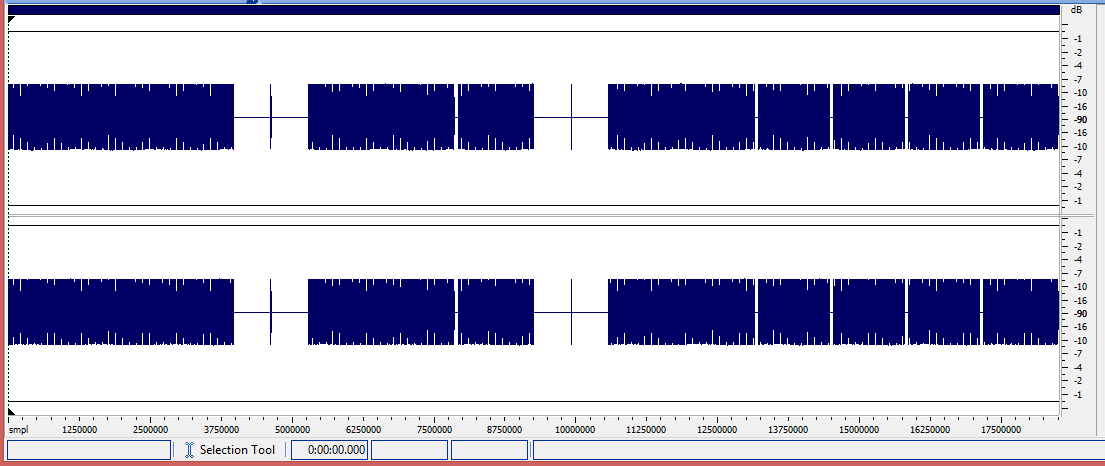
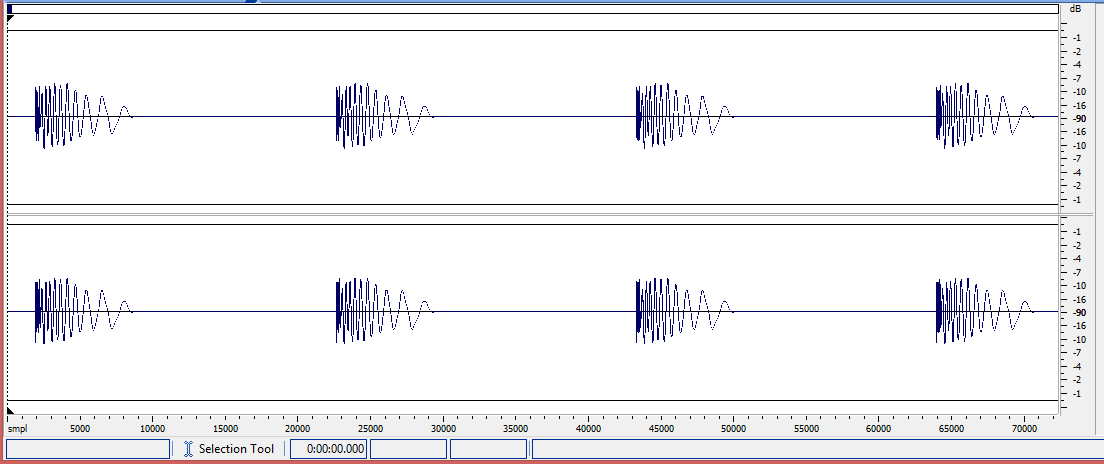
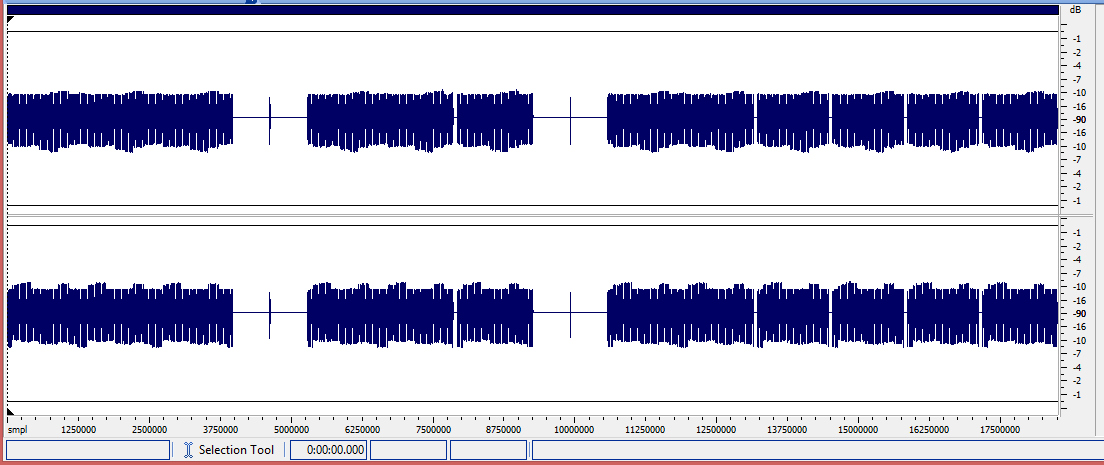
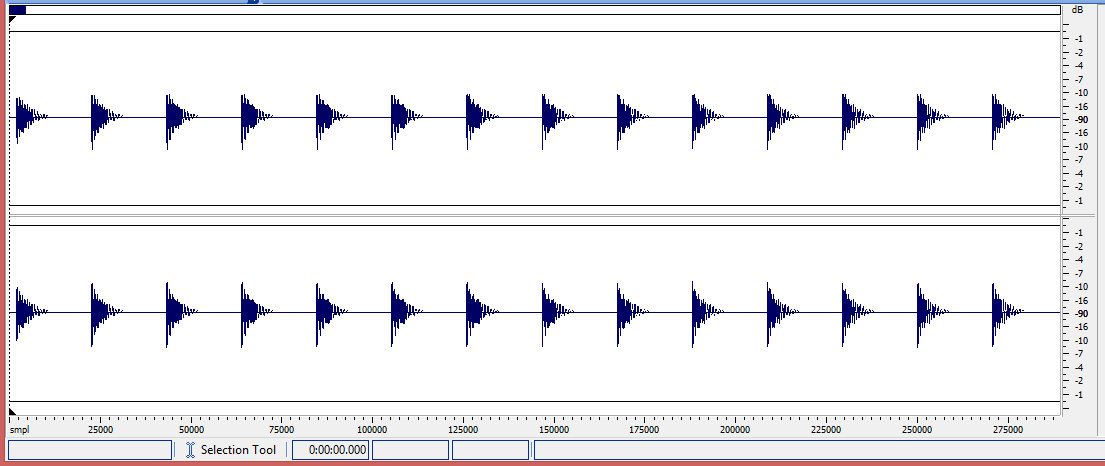
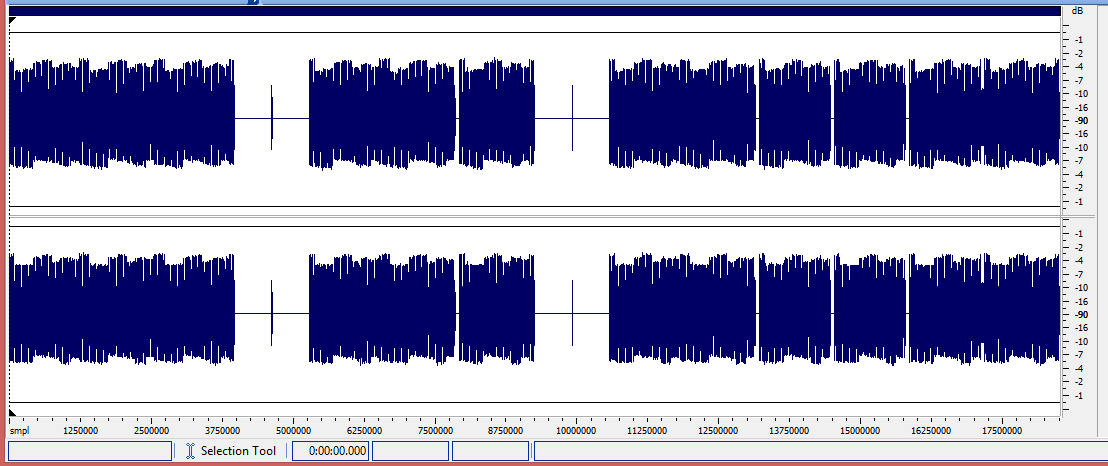


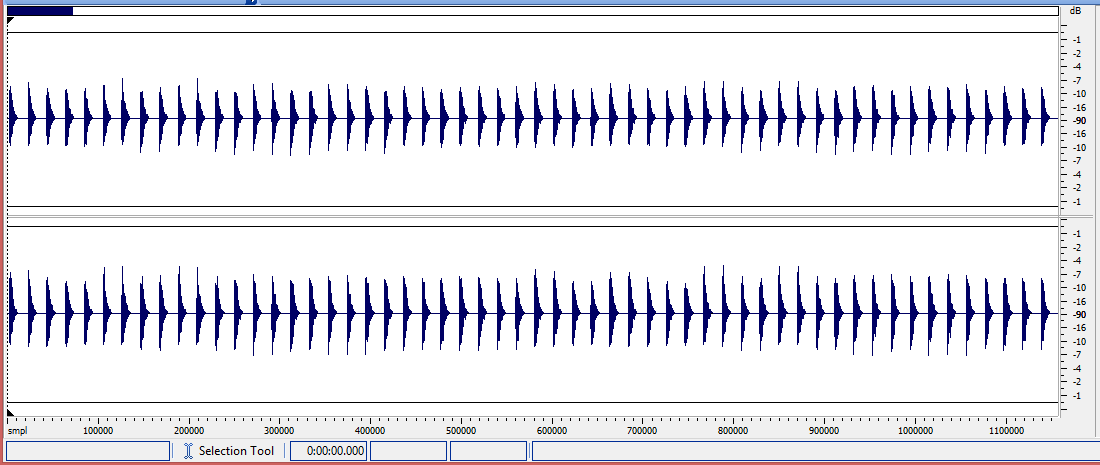


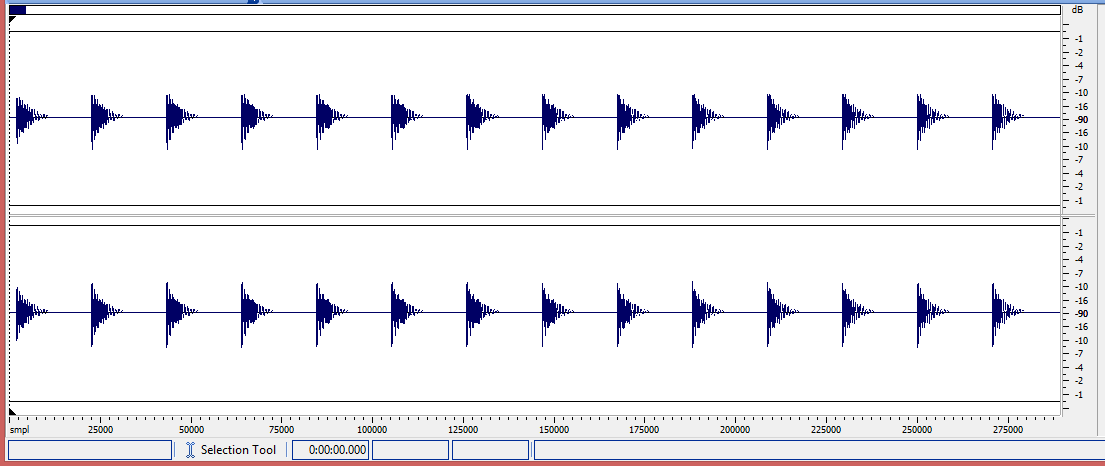
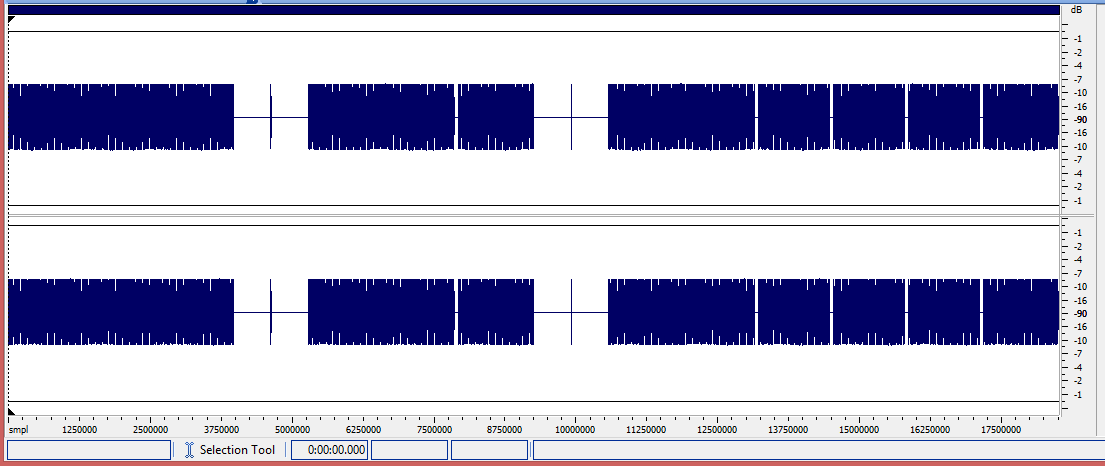
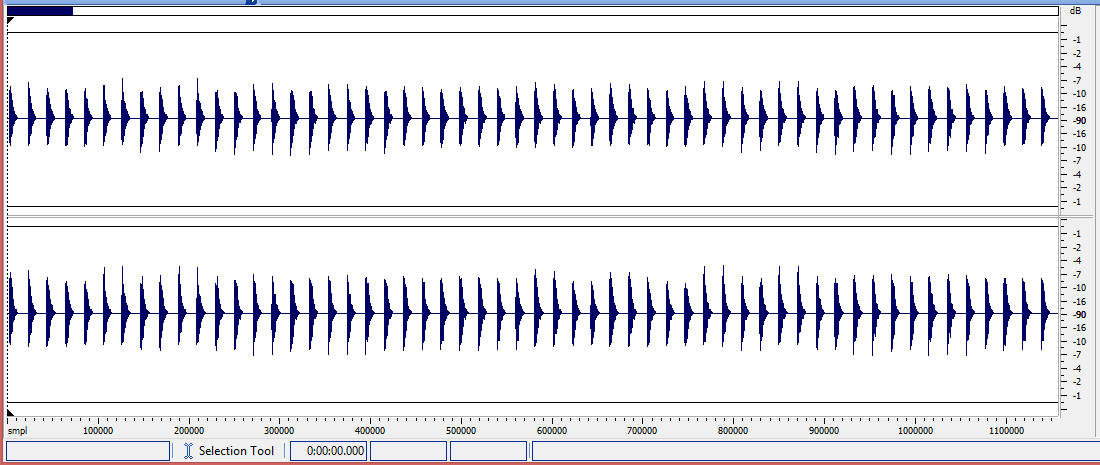










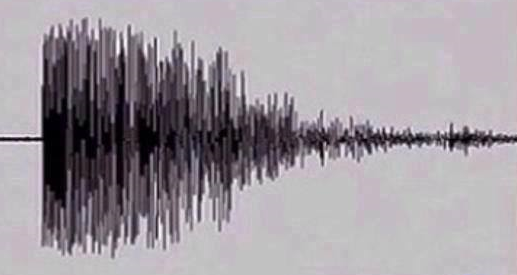
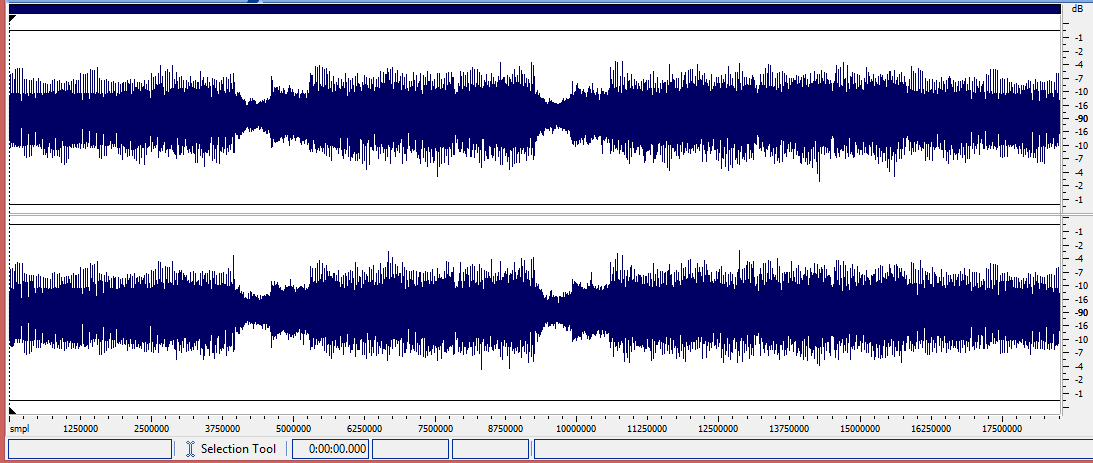

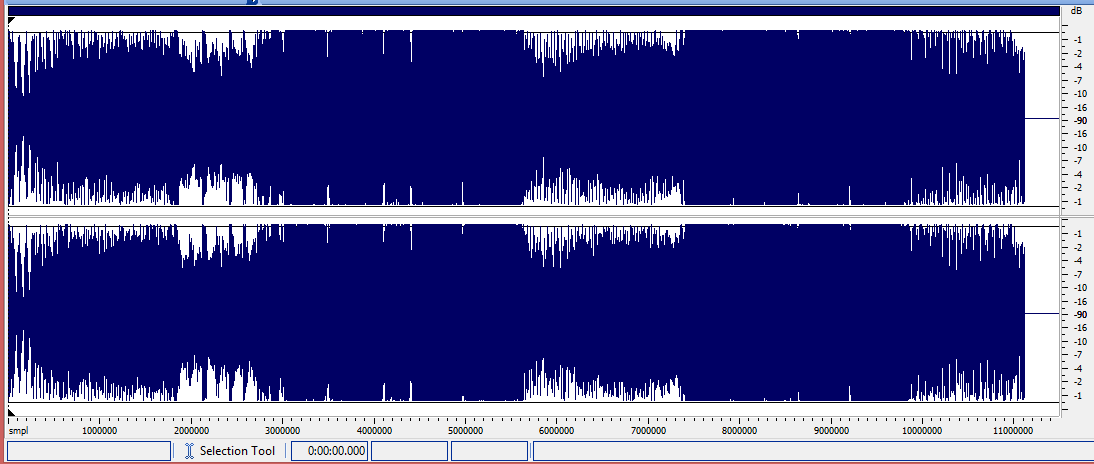


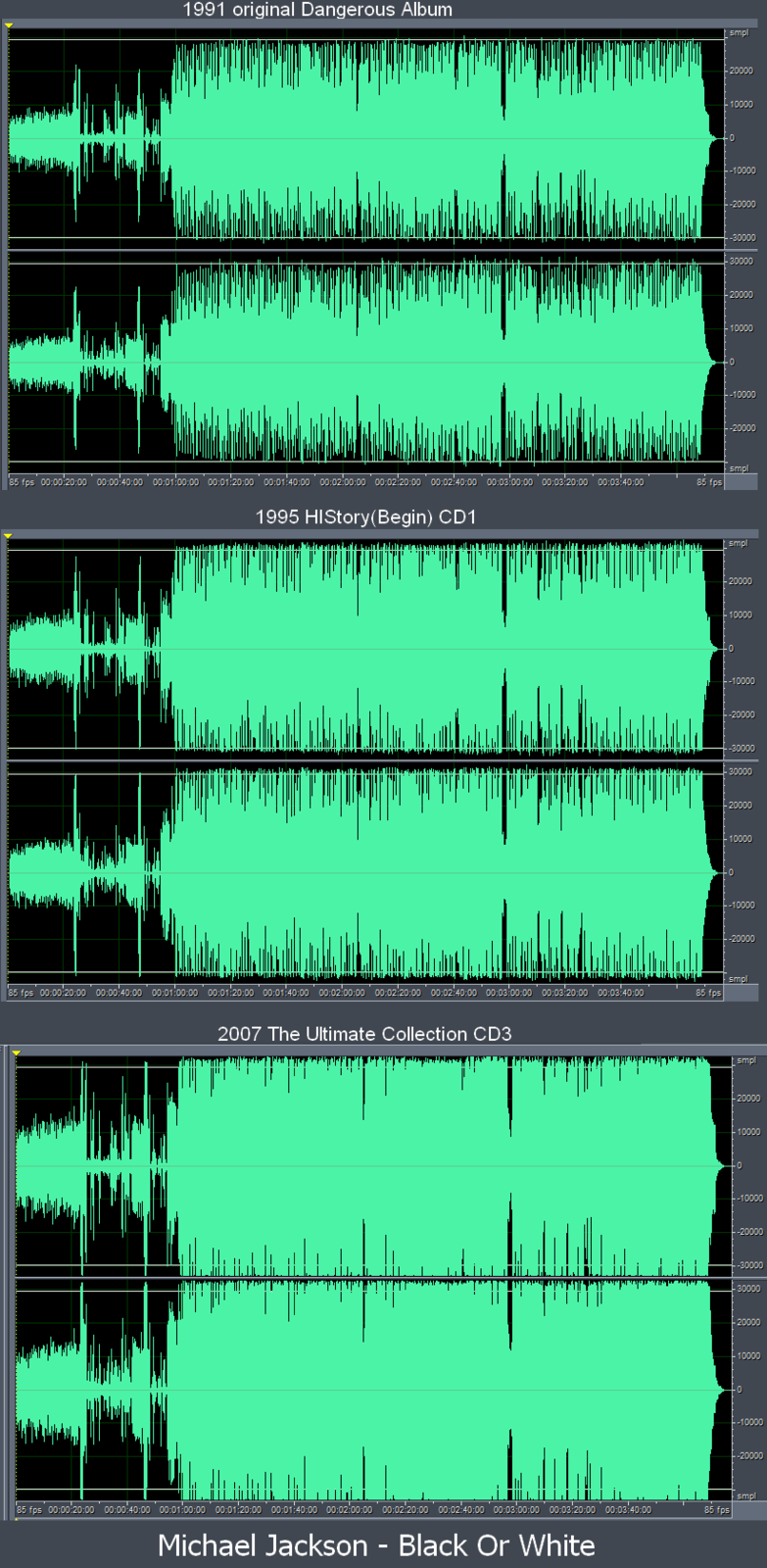
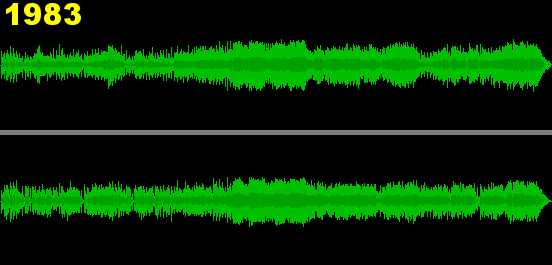

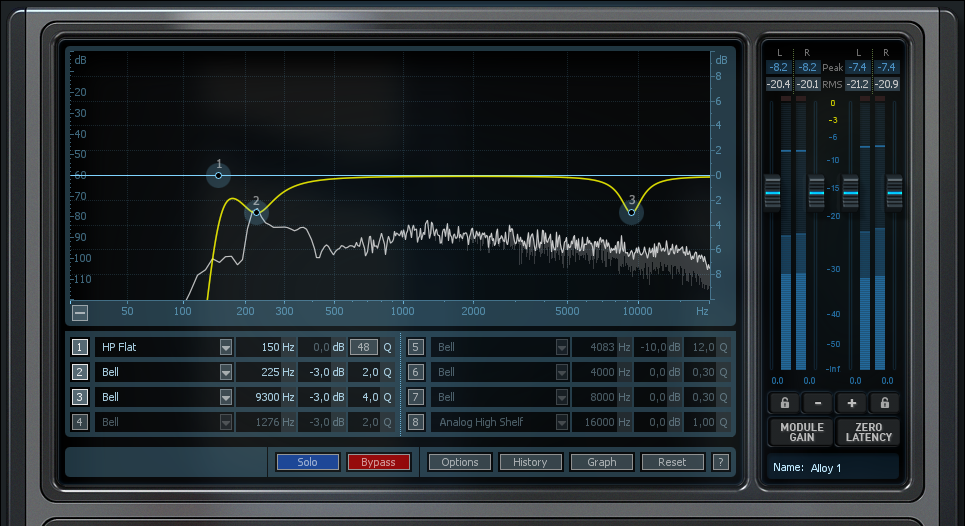



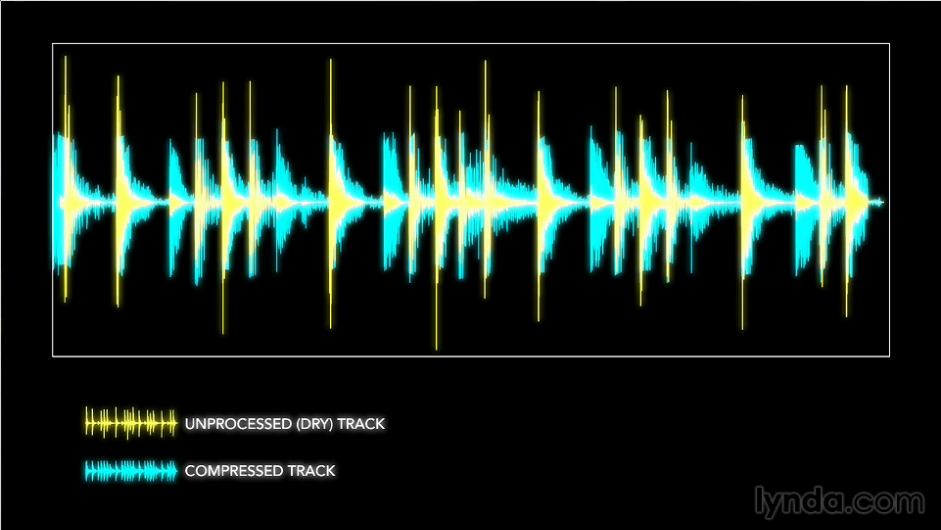

Actually, you can create peaks with a compressor if you put a sl
Actually, you can create peaks with a compressor if you put a slow attack and a long release...
Further more, if you enhance bass with an EQ, it may add to your peaks..
On a personal taste ; please don't kill the dynamics of your music.. keep it alive..